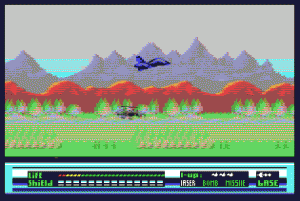
A year passed since the death of the commercial UK C64 scene, and Commodore Zone and Commodore Scene had taken over where C-Format and C-Force had once stood. Games were few and far between, but for those reading, each new release was as exciting as a Gold Medal game reviewed by Zzap. The C64 scene needed games!
Colony was announced in 1995/1996 to the delight of many readers of both magazines. It wasn’t until the preview was unveiled on the covermount of Commodore Zone, when the true realisation of the game was found.
Colony is what can only be described as a cross between Phil Nicolson’s Deadline and Defender. Featuring little men which you have to protect and save for your Colony (Hence the name).
Although not a wholly original concept, Colony incorporated some amazing techniques which had only really been seen in the likes of Mayhem, with its impressive colour mixing and fast parallax scrolling.
The original preview went down well, but suffered from criticism for being too hard. No problem, some constructive criticism for Jon. However, after numerous tweaks and a bit more work, Jon decided to call it time on the project. Possibly for a realisation that the game could take time, and not reap much back. It was slowly being realised at the time that a realistic good profit could not be made anymore with new C64 software. EBES had already been there and failed for instance.
After struggling to get the game complete – Jon decided to hand the project over. Colony was handed to Oxidy/Ambush designs back in 1997. However, it was reported that Jon had lost some of the source code and they needed them all to finish the game. It seems they never got all of it… :-(
In recent times, Jon himself has shed some very detailed light upon the subject of his unfinished masterpiece, which he critisizes quite heavily. He details about the various new C64 techniques which would have blown any gamer away as much as Mayhem did on its release. But as John says, “All ‘if’s and but’s”. .. Even Russ Michaels of EBES and Jon Wells were said to try to help the game’s progress out in various ways.
Still, Jon manages to paint a picture of a game which can stir the imagination and excitement of any C64 game enthusiast. Read more about the game in Johns own words on the Creator Speaks page.
To almost conclude, the game only made it to the stage of a few extra tweaks and a few completed levels. But not much but the previews which you can download from here.
Recently Jason Mackenzie was instrumental in uncovering further parts of the remains of the game, and as well as the original preview, there has now been uncovered a full-hires colour picture and a superb sprite test demo to now seemingly complete this entry.
Well, not quite….
Allan Bairstow was another person to have a load of Jon’s disks, and sure enough GTW were loaned the disks. Upon examing the contents, we were not disapointed!
We found another rare preview of the game… a earlier preview than the rest, with the ship movement in place (rather unsmoothly) and no enemies over a different colour landscape. This file is separate from the D64 in the zip… you may need CCSC64 to run it… as it needs compressing we think to work in Vice (or at least an AR cart plugged in).
But also a fair bit of Source Code was discovered. We asked Jon about putting the source out, and he has given us the thumbs up. You can now download 3 disks worth of source code, bits and pieces.. sfx, graphics and other bits we don’t know much about. These need looking at carefully, as there could be unknown bits on there…. we hope to go into more detail to what they are very soon…. there could be a lot of unused material there… but have a look for yourself!… and help us if you figure it all out! :)
In 2009 Vinny Mainolfi helped in uncovering yet more remains when he backed up an old Commodore Cracker fanzine disk. On here was a special preview with a different title screen and a slightly different preview with no sound and different panels. So yet more to check out!. We learn from this that actually Parallel Logic were originally going to be releasing the game!… this must have fell through when PL left the C64. Jazzcat has kindly taken the relevant files and also some clean note files and previews uncracked and given us an extra D64 to add to the download archive.
In 2019, the project was resurrected and rebranded as Parallaxian, where there was an unsuccessful kickstarter campaign. The enhancements were looking very promising, but unfortunately it seems that development has been stopped once more for now. A preview was released without permission though and it was reported the game was fully cancelled – which according to Jon is incorrect.
Hopefully we will eventually see something of the game eventually released, but much different to Colony that was started almost 30 years ago.
Contributions: Jon Woods, Jason Mackenzie, Allan Bairstow, Vinny Mainolfi, Jazzcat, JazzGhostrider

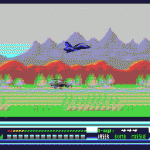

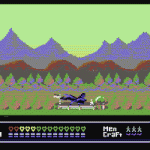
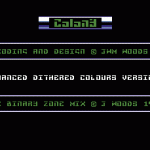
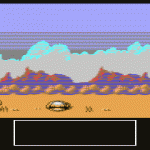

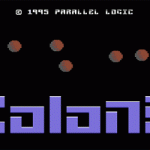

Major update: Given the resurgence of interest in the C64 of late and the release of some stunning new products (most notably Sam’s Journey), I made the decision to revisit my old stomping ground after almost a quarter of a century in absentia.
Accordingly, I have been working secretly on a new game that uses some of the techniques featured in this demo (the colour-blending, the parallax scrolling, etc.), but it is much more ambitious than a mere shoot-em-up. It will hopefully be an ambitious, feature-rich arcadeRPG, for want of a better term, designed for the retro consumer market.
There will be no seizure-inducing colour-dithering such as that used in this horribly rendered emulator clip.
Colony as it was / is, was more of a technology demonstrator than a genuinely playable game. The on-the-ground elements of gameplay were poorly executed and too extensive, while the airspace was too cluttered. The new game – codename “Grand Teton” – will suffer from none of those flaws, I trust.
Returning to the new game, it is based around survival in a high mountain wilderness during a major global crisis. As per Colony, the backdrop is to be a beautiful landscape, but this time the graphical theme is to be more refined. Actually, the starting point for the whole project has been the design, so what I’m aiming for is a strident, boundaries-pushing look, combined with immersive gameplay that requires the player to think and plan ahead. I’m also hoping to incorporate atmospheric music and SFX, 100% arpeggio-free.
Currently, I am still crafting the graphics, largely porting – by hand – the various building blocks from my photo editing software into a UDG format. I liken the process to sewing a tapestry; it’s long, it’s slow, but the results should be worth it.
In closing, I would like to hear from anyone whose curiosity has been piqued by this “toe-dip” announcement; feedback at this stage is vital and would probably set the tone for my morale in the ongoing development of the Grand Teton project.
Silly me, saw it now!
Wow, I decided to look up my old game online to see if any trace of it could be found and I see this!
It would be great to find my old interview because if I recall I included some technical information on the C128 version.
I still think about this game from time-to-time and deeply regret not having the time to have finished it. It really was a rough diamond that needed massive hours of work to polish into a gem, but I always felt the kernel of a good game was there. Ah well…
Hi Jon, good to hear from you – there are some details under the “Creator Speaks” tab about the C128 version. Not sure if this is what you mean.